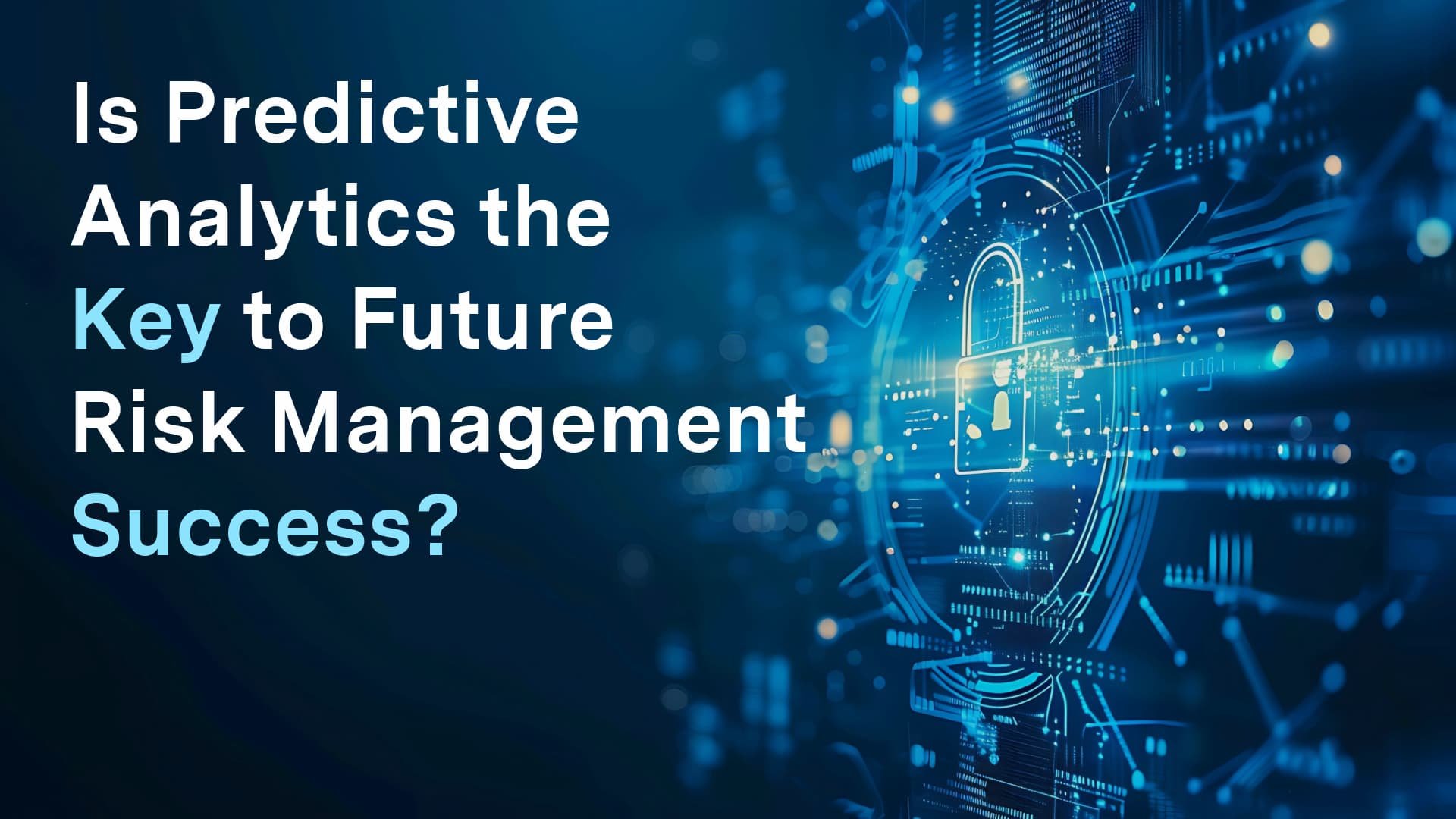Is Predictive Analytics the Key to Future Risk Management Success?
In today’s rapidly changing business environment, ensuring effective risk management has become increasingly challenging. Traditional risk management frameworks are often reactive rather than proactive, providing very limited adaptability, leaving organisations open to compliance gaps. To thrive in today’s environment, businesses need far better and more agile solutions to ensure proactive compliance and strong risk management.
Integrating predictive analytics into risk management offers a next-generation approach toward leveraging data-driven insights and machine learning to identify and mitigate risks much more efficiently.
Limitations And Challenges Of Traditional Risk Management Approaches
In many organisations, risk management often operates in silos, relying heavily on periodic audits and rule-based assessments. Such an approach introduces several inefficiencies, as risk management processes depend on static data, infrequent reporting, and manual checks that are time-consuming and prone to human error. Furthermore, traditional approaches can't keep up with the volume and variety of data being produced in the digital world of today, which makes pinpointing cross-departmental risks or subtle threats in real time extremely challenging.
However, this high reliance on periodic updates and static models renders organisations exposed in a regulatory environment where policies and new risks are in constant flux. Companies using traditional risk management methods often react after the fact—when issues have started to evolve—which perpetuates compliance gaps and delays reaction time. These limitations can result in higher operational costs, a greater chance of regulatory fines, and an inability to protect data. Predictive analytics addresses these with a proactive, integrated approach to risk management.
How Predictive Analytics Enhances Risk Management
Predictive analytics transforms risk management processes from static to dynamic by making use of advanced algorithms, real-time data, and pattern recognition. Fundamentally, predictive analytics makes heavy use of machine learning models trained on historical and current data to forecast risks or compliance issues. In contrast to traditional rule-based systems, which will just operate based on some predefined criteria, predictive analytics is always adaptive to finding out the anomalies and patterns that might point toward fraud, data breaches, or regulatory violations. This technology works on a foundation of real-time, integrated data from across the organisation. Some specific predictive analytics applications in risk management include:
Know Your Customer (KYC): Machine learning models enhance identity verification by identifying red flags in customer behaviour, making onboarding and monitoring processes more secure and efficient.
Anti-Money Laundering (AML): Advanced algorithms detect complex money laundering tactics by analysing transaction patterns and spotting unusual activities that traditional systems might overlook.
Fraud Detection and Prevention: Predictive models continuously analyse financial transactions to identify potential fraud, utilising anomaly detection and pattern recognition to block fraudulent activities before they escalate. Machine learning refines these models over time, improving their accuracy and reducing false positives, which enhances both fraud prevention and operational efficiency.
Customer Risk Scoring: Predictive analytics assesses customer risk comprehensively, factoring in behaviour, geographic indicators, and transaction history. This risk-based approach enables informed decision-making and optimised monitoring of high-risk individuals.
Regulatory Compliance Monitoring: Natural language processing (NLP) examines unstructured data, to ensure organisations adhere to evolving regulations, reducing the risk of non-compliance.
By implementing such predictive analytics solutions, organisations gain a holistic view of risk and compliance that evolves alongside changing threats and regulatory landscapes. This approach enhances agility, with predictive models continuously updating and improving as new data becomes available. The result is not only better detection and prevention against risk but also increased efficiency in regulatory compliance management.
Benefits Of Integrating Predictive Analytics Into Risk Management
Improved Real-Time Risk Detection:
Predictive analytics continually monitors and analyses large amounts of data for real-time risk detection and reporting, often before those risks have developed into actual compliance problems. Predictive modelling can assist an organisation in identifying future risk events so that it can proactively act to neutralise the threats and reduce regulatory fines.
Operational Efficiency and Cost Reduction:
Automating risk management functions with predictive analytics lessens dependence on manual processes, thus saving on operational costs that are required in order to run traditional compliance checks and audits. This frees up resources for prioritising compliance and risk management tasks, minimises human errors, and improves efficiency across the board.
Dynamic Compliance Monitoring and Adaptability:
Integration with predictive analytics platforms allows organisations to remain up-to-date with regulatory changes, automatically adjusting models to reflect new policies and risk factors. This level of adaptability not only supports real-time compliance of business but also rapid responsiveness towards newly implemented regulations, thereby reducing the risk of fines and reputational damage.
Conclusion
Predictive analytics makes risk management into a proactive and data-driven approach, shifting from static compliance and risk management to a dynamic, real-time approach. Predictive analytics interprets risk by leveraging advanced machine learning, natural language processing, and data integration to find emerging threats, provide more accurate compliance, and optimise resource allocation.
With ever-evolving regulatory demands, predictive analytics makes any organisation more agile, as well as enabling the organisation to proactively meet compliance requirements and proactively manage emerging risks. Integrating predictive analytics at the core of risk management empowers organisations to be resilient, competitive, and compliant in an increasingly complex environment.



